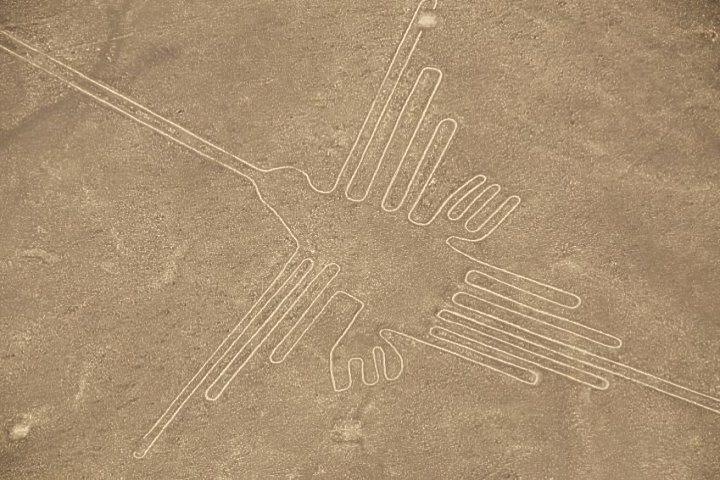Latin America
Related: About this forumPERU'S NAZCA LINES MAY DEPICT EXOTIC BIRDS FROM FAR AWAY REGIONS, SCIENTISTS SAY
BY HANNAH OSBORNE ON 6/19/19 AT 7:01 PM EDT
Many of the birds represented in the Nazca Lines in southern Peru are exotic species, including hermits, pelicans and what appears to be a juvenile parrot, scientists have said. By studying the morphology of 16 of the geoglyphs, researchers say many of the birds depicted should be re-classified—and that having a better understanding of what the species are will provide a better understanding of the lines and what they were created for.
In a study published in the Journal of Archaeological Science: Reports, researchers say the Nazca Lines represent "one of the most attractive ancient mysteries in the world." They were created between the fourth century B.C. to the 10th century A.D. Over 2,500 have been identified, with many different objects represented. Many of these pertain to plants and animals—with birds featuring heavily in the latter category.
Previously, scientists analyzing the lines identified several different species of bird. These include hummingbirds, a duck, a flamingo, a guano bird and a mockingbird. However, these studies generally assigned species based on a few traits.
In the latest research, a multidisciplinary team analyzed the morphology of the Nazca birds and compared them with different species in Peru.
More:
https://www.newsweek.com/nazca-lines-exotic-birds-peru-1444804?piano_t=1
Science:
https://www.democraticunderground.com/122864621
Kid Berwyn
(14,909 posts)Thank you for this news, Judi Lynn!

Art shared with a higher clientele.
Judi Lynn
(160,545 posts)Thanks, Kid Berwyn. ![]()
Judi Lynn
(160,545 posts)Mysterious Etchings in Peruvian Desert Prove to Be Foreign Birds. What Did They Mean to the Pre-Incans?
By Stephanie Pappas, Live Science Contributor | June 20, 2019 06:46am ET
The sprawling Nazca Lines have long been cloaked in mystery. The enormous geoglyphs number in the thousands and portray everything from animals and plants to seemingly mythical beasts and geometric patterns. Now, researchers have found some of Peru's massive creations depict non-native birds.
Among the 16 massive bird carvings in the Nazca desert of southern Peru are a hermit (a forest species) and a pelican (a coastal denizen), according to new research published yesterday (June 19) in the Journal of Archaeological Science: Reports.
No one knows why the Nazca Lines were made, and it's too early to say why the pre-Inca people who carved them would have been interested in non-native birds, said study co-author Masaki Eda, a zooarchaeologist at the Hokkaido University Museum in Japan. [In Images: The Mysterious Nazca Lines]
Nazca mystery
The Nazca Lines are enormous geoglyphs, created with piled stones or carved into the dry desert ground. Most are geometrical shapes or drawings of animals made with one continuous line; they're best viewed from the air or from surrounding hillsides.
The Nazca people began crafting these lines — both by carving into the desert and using piles of stones — around 200 B.C. Archaeologists suspect they had a religious purpose, perhaps the creations served as labyrinths that pilgrims or priests may have walked. Eda began looking at the birds of the Nazca Lines at the behest of study co-author Masato Sakai, an expert in the lines at Yamagata University in Japan. Eda was working to identify bird bones at a nearby archaeological site in the Nazca desert when he became interested in studying the lines themselves from a biological perspective.
More:
https://www.livescience.com/65755-mysterious-nazca-lines-birds-identified.html